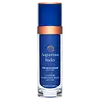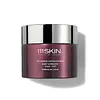What's inside
What's inside
 Key Ingredients
Key Ingredients

 Benefits
Benefits

 Concerns
Concerns

 Ingredients Side-by-side
Ingredients Side-by-side

Water
Skin ConditioningCoco-Caprylate/Caprate
EmollientHelianthus Annuus Seed Oil
EmollientSqualane
EmollientGlycerin
HumectantArgania Spinosa Kernel Oil
EmollientEthyl Oleate
EmollientPersea Gratissima Oil
Skin ConditioningPolyglyceryl-4 Oleate
EmulsifyingMagnesium Sulfate
Oenothera Biennis Oil
EmollientPanthenol
Skin ConditioningPolyglyceryl-6 Oleate
EmulsifyingZinc PCA
HumectantPolyhydroxystearic Acid
EmulsifyingButylene Glycol
HumectantButyrospermum Parkii Butter
Skin ConditioningPotassium Sorbate
PreservativeSodium Benzoate
MaskingTocopherol
AntioxidantSodium Hyaluronate
HumectantHydrolyzed Rice Protein
Skin ConditioningMaltodextrin
AbsorbentCitric Acid
BufferingCamellia Sinensis Leaf Extract
AntimicrobialHydrogenated Lecithin
EmulsifyingTocopheryl Acetate
AntioxidantXanthan Gum
EmulsifyingAlanyl Glutamine
HumectantArginine
MaskingOligopeptide-177
Phenylalanine
MaskingSisymbrium Irio Seed Oil
MaskingSodium Chloride
MaskingDextran
Palmitoyl Tripeptide-8
Skin ConditioningWater, Coco-Caprylate/Caprate, Helianthus Annuus Seed Oil, Squalane, Glycerin, Argania Spinosa Kernel Oil, Ethyl Oleate, Persea Gratissima Oil, Polyglyceryl-4 Oleate, Magnesium Sulfate, Oenothera Biennis Oil, Panthenol, Polyglyceryl-6 Oleate, Zinc PCA, Polyhydroxystearic Acid, Butylene Glycol, Butyrospermum Parkii Butter, Potassium Sorbate, Sodium Benzoate, Tocopherol, Sodium Hyaluronate, Hydrolyzed Rice Protein, Maltodextrin, Citric Acid, Camellia Sinensis Leaf Extract, Hydrogenated Lecithin, Tocopheryl Acetate, Xanthan Gum, Alanyl Glutamine, Arginine, Oligopeptide-177, Phenylalanine, Sisymbrium Irio Seed Oil, Sodium Chloride, Dextran, Palmitoyl Tripeptide-8
Water
Skin ConditioningIsopropyl Myristate
EmollientCaprylic/Capric Triglyceride
MaskingGlycerin
HumectantPEG-40 Hydrogenated Castor Oil
EmulsifyingGlyceryl Stearate
EmollientPEG-100 Stearate
Acetyl Cysteine
AntioxidantEscin
TonicSodium Ascorbyl Phosphate
AntioxidantSodium Hyaluronate
HumectantCistus Incanus Flower/Leaf/Stem Extract
Skin ConditioningYeast Extract
Skin ConditioningSoy Isoflavones
Skin ConditioningBeta-Sitosterol
Emulsion StabilisingAesculus Hippocastanum Seed Extract
Skin ConditioningAloe Barbadensis Leaf Extract
EmollientCentella Asiatica Extract
CleansingGlycosphingolipids
EmollientCarbomer
Emulsion StabilisingHydroxyacetophenone
AntioxidantOlea Europaea Fruit Oil
MaskingOryza Sativa Bran Oil
EmollientPhenoxyethanol
Preservative1,2-Hexanediol
Skin ConditioningCaprylyl Glycol
EmollientSodium Hydroxide
BufferingPolyglyceryl-6 Laurate
EmulsifyingPolyglyceryl-10 Oleate
Skin ConditioningPhenylpropanol
MaskingLecithin
EmollientSorbitan Palmitate
EmulsifyingParfum
MaskingWater, Isopropyl Myristate, Caprylic/Capric Triglyceride, Glycerin, PEG-40 Hydrogenated Castor Oil, Glyceryl Stearate, PEG-100 Stearate, Acetyl Cysteine, Escin, Sodium Ascorbyl Phosphate, Sodium Hyaluronate, Cistus Incanus Flower/Leaf/Stem Extract, Yeast Extract, Soy Isoflavones, Beta-Sitosterol, Aesculus Hippocastanum Seed Extract, Aloe Barbadensis Leaf Extract, Centella Asiatica Extract, Glycosphingolipids, Carbomer, Hydroxyacetophenone, Olea Europaea Fruit Oil, Oryza Sativa Bran Oil, Phenoxyethanol, 1,2-Hexanediol, Caprylyl Glycol, Sodium Hydroxide, Polyglyceryl-6 Laurate, Polyglyceryl-10 Oleate, Phenylpropanol, Lecithin, Sorbitan Palmitate, Parfum
 Reviews
Reviews

Ingredients Explained
These ingredients are found in both products.
Ingredients higher up in an ingredient list are typically present in a larger amount.
Glycerin is already naturally found in your skin. It helps moisturize and protect your skin.
A study from 2016 found glycerin to be more effective as a humectant than AHAs and hyaluronic acid.
As a humectant, it helps the skin stay hydrated by pulling moisture to your skin. The low molecular weight of glycerin allows it to pull moisture into the deeper layers of your skin.
Hydrated skin improves your skin barrier; Your skin barrier helps protect against irritants and bacteria.
Glycerin has also been found to have antimicrobial and antiviral properties. Due to these properties, glycerin is often used in wound and burn treatments.
In cosmetics, glycerin is usually derived from plants such as soybean or palm. However, it can also be sourced from animals, such as tallow or animal fat.
This ingredient is organic, colorless, odorless, and non-toxic.
Glycerin is the name for this ingredient in American English. British English uses Glycerol/Glycerine.
Learn more about GlycerinSodium Hyaluronate is hyaluronic acid's salt form. It is commonly derived from the sodium salt of hyaluronic acid.
Like hyaluronic acid, it is great at holding water and acts as a humectant. This makes it a great skin hydrating ingredient.
Sodium Hyaluronate is naturally occurring in our bodies and is mostly found in eye fluid and joints.
These are some other common types of Hyaluronic Acid:
Learn more about Sodium HyaluronateWater. It's the most common cosmetic ingredient of all. You'll usually see it at the top of ingredient lists, meaning that it makes up the largest part of the product.
So why is it so popular? Water most often acts as a solvent - this means that it helps dissolve other ingredients into the formulation.
You'll also recognize water as that liquid we all need to stay alive. If you see this, drink a glass of water. Stay hydrated!
Learn more about Water